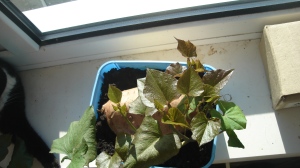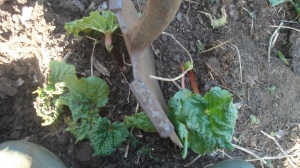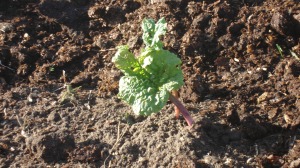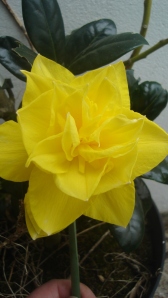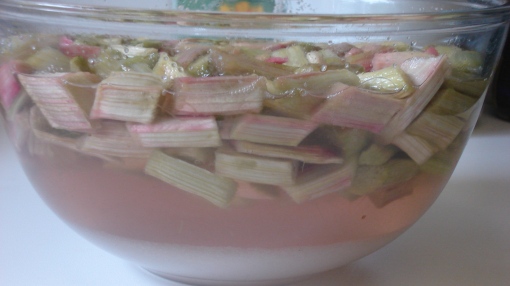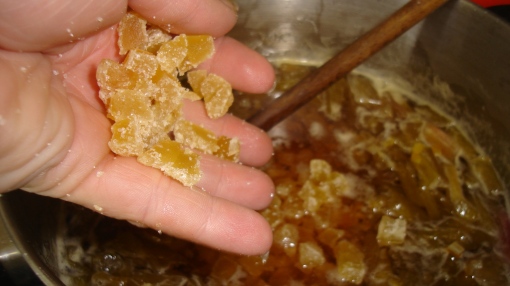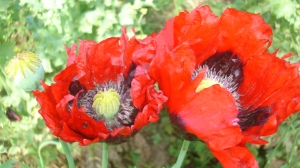
I couldn’t resist taking a picture of this oriental poppy which was growing right next to the ragwort.
At this time of year, we turn once again to the task of pulling Ragwort from the fields to stop it spreading.
What is Ragwort?
Ragwort (Senecio jacobaea) is a poisonous plant often found growing on grazing land. It contains Alkaloids which, if ingested, cause cirrhosis of the liver and, in cows, inflammation of the 4th stomach. Most horses will not eat it when it is growing, unless they are absolutely starving and there is no other food. The biggest danger is that it is cut in along with the hay and then it WILL be eaten. Whilst it is still poisonous to goats, they have a greater tolerance to it.
In many places it is illegal to allow ragwort to set seed and, for most large animal owners, this time of year sees the start of ragwort season.
Ragwort is biennial(for the difference between biennial and bi-annual click here). This means that it takes two years to grow to seed.
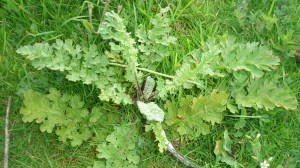
In the first year, it grows as a low-growing rosette. It is still poisonous to animals, but has no ability to spread itself at this stage. BUT….(and it is a big but) if you pull it in the first year you will leave some pieces of root in the ground which can come back and re-grow. Likewise if you cut ragwort, it will just grow again from the base.
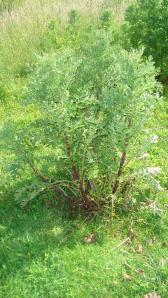
In the second year it grows to 2 – 3 foot high and produces clusters of beautiful bright yellow flowers. After it has flowered, the seeds are spread and the plant dies off. The important thing to remember here is that the ragwort has stored up all its energy in the roots in its first year of growth, ready to set seeds in the second year. If you cut it back early in it’s growth, it will just put up some more growth – it is programmed to flower and that is what it is going to do!
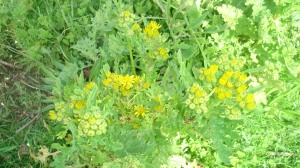
So how do you get rid of ragwort?
The first thing to do is not to panic. Let’s look at why we want to get rid of the ragwort.
This comes into two categories.
Ragwort is toxic to animals.
Because ragwort is toxic,we don’t want our grazing animals eating it. That much is obvious. And we want to prevent it from setting seed.
So the first thing to do is to keep your animals off it. Now, if you just have one or two plants poking their noses through in your paddock then its not worth closing off the field so by all means go along and pull it out. The roots are quite tough so do it just after it has rained, when the ground is a little softer, and you will have better results. If the pulling is a problem for you, you can buy a ragwort fork for lifting the plant out with.
If you have a larger, dense, area of growth, then I would fence the animals off it. If it is a portion of your paddock then run an electric fence across it to keep them off. Remember, the ragwort itself isn’t a problem if the animals aren’t grazing in amongst it. You don’t need to get in and pull a load of first year ragwort unless you really need to graze that area.
We mustn’t let ragwort set seed.
Now this is easy to deal with. Wait! That’s right – don’t be fooled into running out and pulling the ragwort as soon as it shoots up. Remember what we said earlier – if you pull it too early, it will just re-grow. So wait! Wait until the ragwort is in flower. At this stage, the ragwort thinks it has won. It is in flower, it’s job is done and it is preparing to die back anyway. So once those flowers come, THEN get out there and pull it. At this stage the plant will not re-grow, and you have interrupted the seeding cycle by preventing the seeds from spreading.
Now comes the even more important bit. Clear it all up. Make sure that you gather up ALL the dead plants. Either take a wheelbarrow or a tarp with you as you pull the plants and put them straight onto it – not onto the ground first. Then take the plants and either burn them on a bonfire or take them to you local dump where your authority may have a disposal system in place. Do NOT just make a heap of the plants and leave them to die off there. Firstly there is still a danger that something might eat them. Secondly, ragwort will continue to try to set the seeds, even after it is pulled from the ground. So the plants need to be destroyed.
If you have acres and acres of land to clear, this obviously isn’t going to work for you. Large scale farmers spray the plants and then wait and hope that they all die off. Unfortunately, by spraying the area you will also kill off all the other broad-leaved plants (basically everything except grass) many of which are beneficial either to your livestock, your land, or the wildlife.
Likewise, if you have land that you really NEED to graze, then you can’t afford to fence it off and wait. In that instance you will have to make the choice between pulling it, having it sprayed, or having it cut.
One year’s seeds, seven years’ weeds.
Will you have ragwort again next year?Yes, almost certainly you will. Weed seeds live in the ground for many years (up to 60 in the case of poppies) and will keep growing. Add to that the effect of seeds blowing in from elsewhere and you will probably never be entirely free from ragwort.
Just remember three key things ……don’t panic, don’t let the livestock graze in amongst it, and don’t let it set seed.
